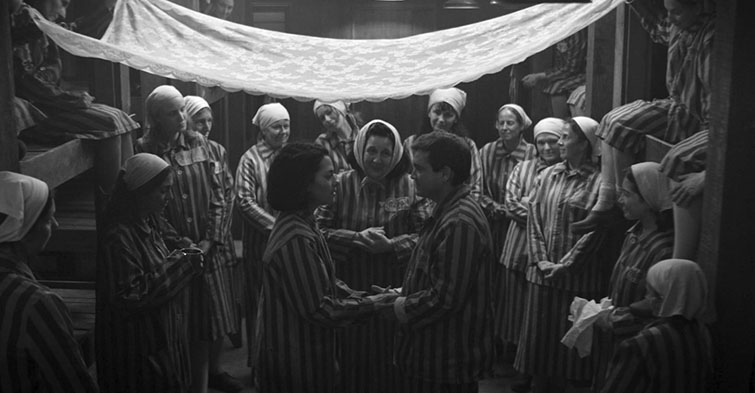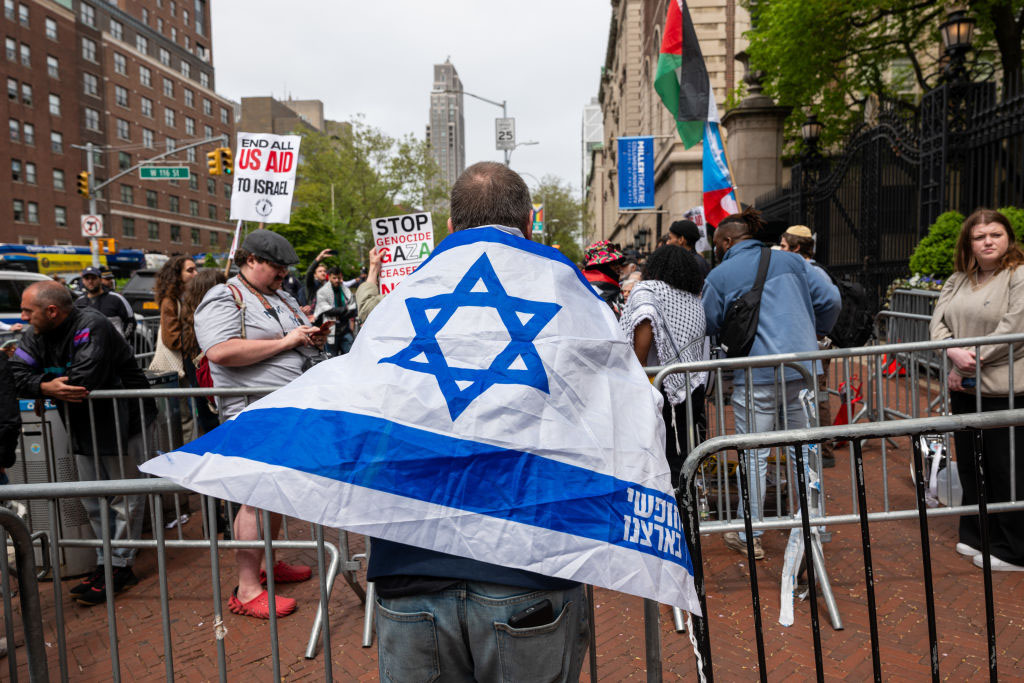This column was revised after an investigative report by NBC4 aired on Nov. 9.
Three years ago, the Jewish Journal looked into whether the nuclear contamination from Rocketdyne’s Santa Susana Field Laboratory posed continuing health concerns at Brandeis-Bardin Institute (BBI) in Simi Valley. The investigation was prompted by the release of a new study that showed increased rates of cancer in neighborhoods close to the Simi Valley site.
The yearlong process turned into one of the more frustrating experiences I’ve had in my years at the Jewish Journal.
Wait — scratch that — the most frustrating experience.
The story was one I had long wanted to explore, ever since serving on the board of the Los Angeles Press Club with Michael Collins, a journalist who relentlessly investigated the area.
Beginning in the 1950s, Rocketdyne and other corporations used the 2,800-acre Santa Susana Field Laboratory (SSFL) to research and test nuclear reactors, advanced rocket systems and futuristic weapons. Gross contamination resulted from the release of the operation’s toxic and radioactive materials, including a leak that resulted from a partial meltdown on July 13, 1959.
Concerns over the lab’s health and the environmental impacts continue, including concerns over Brandeis-Bardin, the nearly 3,000-acre Los Angeles Jewish campus near the lab. Hundreds of children and staffers spend summers each year at BBI’s Camp Alonim. Thousands of people enjoy BBI programs year-round.
A contributing reporter came to us willing to investigate a story on contamination at BBI, and I believed we had a team of editors in place to finally make it happen.
American Jewish University (AJU) took over responsibility for BBI after a 2007 merger. AJU paid its lawyers to review our questions, and it devoted considerable staff time to our inquiries. But AJU officials, who let it be known they felt our reporter had an ax to grind against BBI, pushed back as the questions explored all potential facets of the story.
I knew that the story would upset many people by raising issues of toxicity that some felt had been resolved long ago. But that’s the challenge of community journalism. The process of journalism — asking hard questions, bringing to light facts and issues some people would rather not — can be inherently antagonistic. But the process also stands in for the rest of the community, who need those answers. I’ve found that if you do journalism right — and are willing to suffer the anger — you have the opportunity to help the people and institutions you admire.
When we had a late draft of the story, we asked an independent, Pulitzer Prize-winning journalist — a non-Jewish writer with no connection to Brandeis — to review it. He sent it back with a slew of red lines, pushbacks and questions that still needed answers.
At that point, I decided we didn’t have enough new information to justify the article. We were unable to verify independently whether there remains contamination on BBI grounds, or of any harm attributable to contamination in the past or present. We heard from one couple, the Sokols, who asserted that their struggle with cancer was due to exposure at BBI, but we were unable to find others. We found scientists who were concerned about the Rocketdyne disaster, as anybody should be, but could not speak authoritatively about the BBI situation itself. But I was keenly aware that just raising these issues again without pushing the story forward could do more harm than good.
The story of the story we didn’t end up printing circulated in our Jewish Mayberry. Because Peter Lowy, the board chairman of the Journal’s parent company, TRIBE Media Corp., was once chairman of the board at AJU, the going assumption was that he killed it. He didn’t. The only pressure we received from our board was the same pressure we apply to ourselves: Get the story right. I didn’t think we had.
I didn’t devote enough resources, time and outside expertise to the story. The ramifications of the Rocketdyne lab are among the great environmental catastrophes in modern American history. The investigation into whatever lasting impact the disaster has had on BBI needed far more time, money and expertise than we were able to devote.
This fall, Joel Grover, producer Matthew Glasser and the investigative team at KNBC news took a crack at it, following in the footsteps of reporters like Collins, Warren Olney, Kevin Roderick and others. Part 1 of their report, “L.A.’s Nuclear Secret,” aired in late September.
The second of their multipart, yearlong investigation aired Monday night, Nov. 9, and focused on BBI. It was titled “Camp Coverup.” KNBC unearthed new information about the impact of SSFL activities on Brandeis, including a previously unreleased 1997 report by a Brandeis-hired scientist, Joel Cehn, that raises deep concerns. Whether the report or KNBC’s other evidence proves conclusively there is a current danger to campers is less clear. But it does prove one thing: This story is not going away. There must be an even fuller accounting.
For that to happen, here’s what we need: transparency. In 1997, BBI’s attorneys reached a settlement with Rocketdyne over the contamination. A condition of that settlement was that it remain confidential, and even most BBI board members at the time were not allowed to read it — though they had to sign off on it.
In response to Grover’s investigation, AJU belatedly has begun to make public the results of testing on BBI property. A small portion of them is posted at the aju.edu website, and numerous other documents are at nbclosangeles.com. AJU’s response to KNBC, with KNBC’s comments, is at jewishjournal.com.
There once may have been some very good reasons for not releasing all the information AJU has on BBI, but AJU’s lack of transparency is hurting, rather than helping, the community.
Last August, I spent a magical Friday night at BBI, celebrating with hundreds of young Alonim campers clad in white, singing under a spreading oak. Brandeis-Bardin was an integral part of Los Angeles’ Jewish past, and it will play a crucial role in its Jewish future. It just has to come completely clean — in the present.
Rob Eshman is publisher and editor-in-chief of TRIBE Media Corp./Jewish Journal. E-mail him at robe@jewishjournal.com. You can follow him on Twitter and Instagram @foodaism.


































